The work of creativity in the age of digital reproduction and social rebellion
by STIRworldApr 25, 2025
•make your fridays matter with a well-read weekend
by Rosalyn D`MelloPublished on : Apr 25, 2022
A khaki-uniformed man strides on all fours on the floor of a forest, his gait reminiscent of a jungle cat. His face is contorted while his jaws open and close to mimic a tiger’s blood-curdling roar. The camera zooms out to allow more characters to enter the frame, offering a semblance of immediate context to us, the viewers of the opening sequence of Amit Masurkar’s totally underrated 2021 Indian film, Sherni. Like the others on the screen, the man occupying centrestage is a forest guard. He is momentarily role-playing the predator they are hoping to track in order to test the efficacy of the angle of the surveillance cameras his colleagues have installed under the supervision of their new boss, divisional forest officer, Vidya Vincent (played by Indian actress Vidya Balan). The comic awkwardness of the forest guard’s movements sets the tone for the film’s wry humour communicated through such symbolic saturation.

Without it being explicitly said, we are introduced to a situation in which the predator is human prey. This is the deceptively simple plot at the core of a film about the man-made hysteria generated and kindled to serve human interests. We see it unfold through the lens of Vidya Vincent who is improvising her way through her new posting in a forest surrounding an unnamed village in Madhya Pradesh, India. When a dispossessed tigress, T12, starts to claim animal and human lives, she is initially tasked with tranquillising it so it can be transported to the nearby sanctuary. However, the tigress soon becomes the point of contestation in the midst of an upcoming election. Vidya finds herself dispossessed of authoritative agency as her opportunist ex-mentor, Akhil Nangia (Neeraj Kabi) is asked to helm the operation with the help of the trophy hunter, Ranjan Rajhans, aka Pintu (Sharat Saxena). By centring the narrative through Vidya’s perspective, we get a bird’s-eye perspective of the casual sexism rampantly in force within the Indian bureaucracy. We gleam the loneliness of her mission from the onset, during her video call with her oddly supportive husband, who is based in Mumbai, who urges her to stick to the posting despite the challenges, since, as someone working in the private sector, he doesn’t have the luxury of job security. Like T12, and her ally, Hassan Noorani (Vijay Raaz), a university teacher and passionate conservationist, she, too, is the film’s underdog. The plot’s overarching simplicity is undercut by the action, which, unlike the run-of-the-mill fare, isn’t constituted by explosive dialogue or gratuitous background music or even twists and turns that teeter on the edge of plausibility and predictability. Instead, Sherni asserts its narrative sway through compressed cinematographic cues that are embedded in symbolist, surrealist, sardonic undertones—the opening sequence is a case in point. What is clearly revealed, beyond the shadow of doubt, but without over-enunciation, is the filmmaker’s acuity for making subtly manifest the unique absurdities of the Indian bureaucratic system as well as the nuanced structural intersections between patriarchy, colonialism, and prevailing speciesist discourse. Besides the densely coded visual language, the film’s pitch-perfect script, written by Aastha Tiku, is elevated by an excellent cast, making it an unusually enjoyable watch, despite the sombre nature of its content.
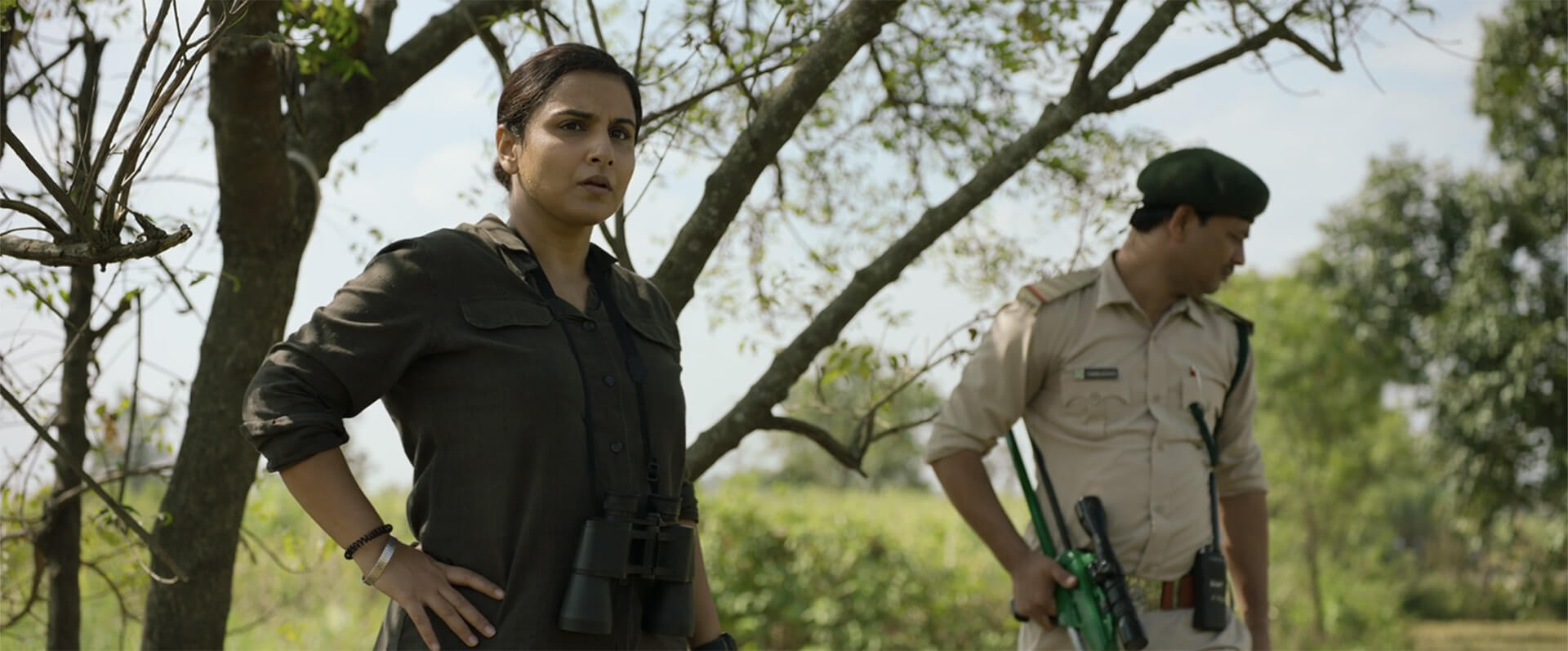
The refusal to subscribe to the hero-driven saviour complex that usually brands such topical films is what sets Sherni apart as decidedly eco-feminist. Even though Vidya is framed as our lead protagonist, the film’s script and direction enables the generation of a plurality of perspectives. This was a conscious part of the scriptwriting process, Tiku confirmed to me over an email interview. At first the topic of human-animal conflict seemed fairly straightforward to her, because she was focused mainly on the movement of story through time. “But as I got deeper into the writing, it got harder to write the story from a singular point of view,” she mentioned. “It was clear to me that the story of Sherni is not concerning any particular individual taking action (as is the case with many hero-driven narratives) but a story about collective action and the power it holds.” Tiku is cognisant of how women, especially indigenous, have been at the forefront of conservation movements in India, but this forms only a fraction of the film’s eco-feminist angle. Its ideological substance comes from her exploration of existential questions like “who gets to live and who gets to die, the value of life and death, and the systems of power that decide the value”.
Sherni presents us with a range of male archetypes, the most significant being the hunter, Pintu; the corrupt officials—Nangia, and Vidya’s supervisor, Bansilal Bansal (Brijendra Kala); and the power-grabbing politicians, PK and GK Singh, all of whom represent the intersections of caste, class, and patriarchy. But it steers clear of positioning all its male characters as questionable, instead offering us alternatives to the toxic masculinity that poses the most obvious threats to planetary life, notably through the character of her supportive husband and the personhood of Hassan Noorani, a zoology professor who has had a long-term history with mobilising efforts towards tiger conservation in the area. Noorani is a significant counterpoint to all the toxic male characters in the film. He is a good listener, doesn’t mansplain, when he so easily could, and is genuinely invested in the well-being of the environment and not in any form of personal glory. It is in him that Vidya Vincent finds the most trustworthy ally and it is their collaborative efforts at collective-building that ultimately bears fruit, serving as a salve to toxic patriarchy. Tiku said she wanted to explore facets of masculinity… “especially performative masculinity and the emptiness/shallowness of it,” she adds, “I wanted to capture not just more orthodox manifestations of masculinity but also look at healthier, more inclusive and evolving facets of what it is to be a man. That’s why you see a Nangia and the hunter on one side and a Noorani, and boys from ‘Forest Friends’ on the other, who are definitely more evolved and mature than the former.” Tiku also revealed she was present throughout the shoot and had multiple conversations with the actors about the nuances of their characters and the politics of the film. “We had a certain value system while approaching the film—to avoid a colonial or feudal lens while showing the forest and the people living there, to steer away from mythology, to show multiple perspectives and voices. I think we were able to adhere to those values to the best of our abilities. It was a risk to not oversimplify the story and place our trust in the audience completely.”

Besides positioning him as an ally, Sherni relies on Noorani’s inherent and intuitive wisdom and perspective to reveal to viewers the environmental degradation that has been enacted upon landscape, though other characters, too, make clear to Vidya Vincent the impact of monocultures and unbridled development projects upon their grazing pastures. By allowing these facts to surface, the film resists the temptation to sermonise. We see clearly the various machinations by which the tiger is demonised and vilified and how man asserts his agency over the other-than-human world within a capitalist-hetero-patriarchal set-up with callous regard for maintaining the equilibrium of the ecosystem. That the tiger hunts men, killing shepherd as well as sheep is demonstrative of the growing imbalance and schism between the animal and human world. Sherni offers the opportunity for us to empathise with the ‘beast’.
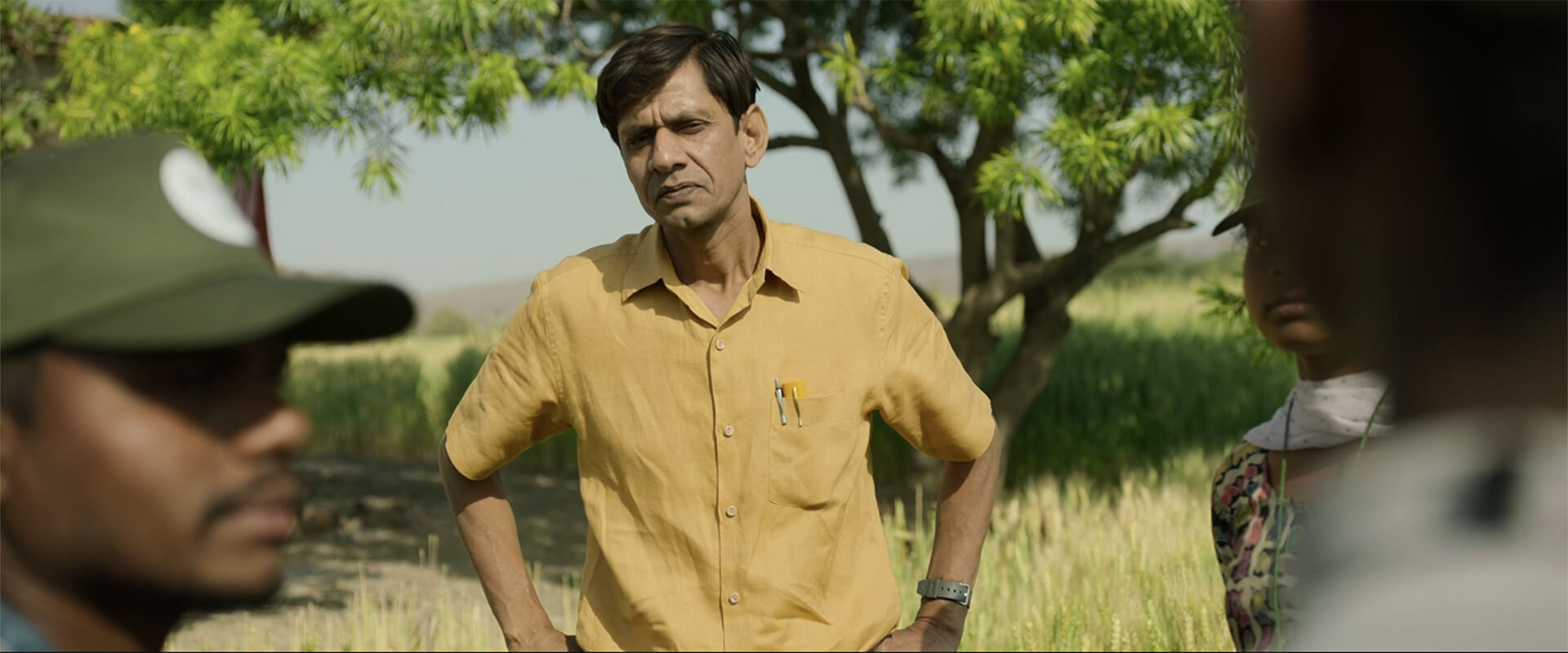
Incidentally, days after viewing Sherni on Amazon Prime, I came across the press release from the Bozen-based art gallery, ar/ge kunst about the screening of Floating Fears, an in-progress video essay by two non-artists, museologist, Johanna Platzgummer and social anthropologist, Elisabeth Tauber, commissioned by ar/ge kunst as part of Hostile Environments. Over the last three years of my engagement with the Alpine region as a new immigrant I have witnessed, through the daily papers, how the issue of bears and wolves resurfacing in this part of Northern Italy has been polarised. During my treks to Alms—farm-to-table restaurants commonly found on hiking trails—I spotted the posters pitting the wolf as an enemy. A regular feature of the daily news includes morbid photographs of sheep carcasses preyed upon by the wolf. For a while a certain portion of primetime news was even dedicated to the exploits of one specific runway bear I remember as M59. So, when I read about two people currently researching the cross-border movements of wolves in South Tyrol, I was instantly lured and requested access to what was described as a research tool in the making approaching the interdependence of animals, humans, and plants, and the role they play in the existence and preservation of these high alpine habitats, from an ecofeminist perspective.
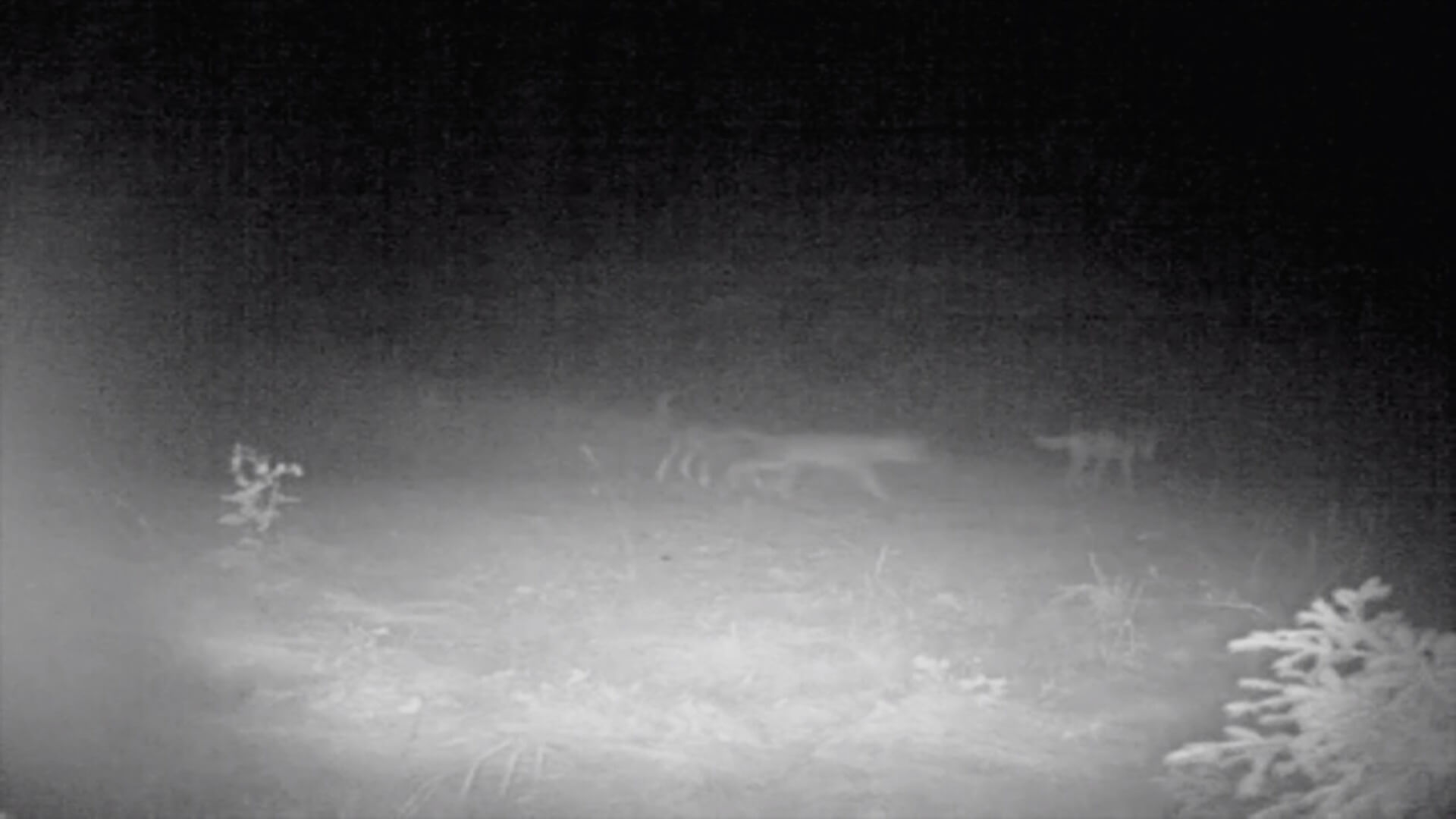
Within an 11-minute span, the video essay surveys a range of perspectives from subversive stakeholders in the wolf hysteria debate, namely, shepherds, each one representative of a unique standpoint, of differing social standing, their opinion either marginalised by the larger agrarian community or not widely accepted, their coping techniques inventive, for instance, while Astrid Summerer trains guard dogs to ward off wolves, Erich Höchenberger uses a mobile fencing strategy to guard his flock. They each resist, in their own way, the predominant narrative that demonises the wolf as an intruder, reminding us that wolves have preyed these Alpine pasture lands before. What is alarming, it is pointed out, is that the wolf kills more sheep than it desires to eat, and that is perhaps revealing of a fissure in the ecosystem. Through interviews with the various shepherds, Floating Fears establishes the significance of grazing to pasture lands, how the activity of sheep helps nurture and strengthen certain grasses, as well as establishes the capitalist economies that ensure the profitability of selling the entire flock to foreign lands. One interviewee puts it quite candidly. It’s either the wolf that kills the sheep or the human, the sheep is meant to be slaughtered. He echoes what another shepherd says, the wolf is the shepherd’s competitor. They are careful not to use polarising language and to imagine creative solutions to what is referred to as the wolf hysteria. “We know that the trust our informants put in us is very precious, and we think about what we can add to the wolf hysteria debate and what not, in order to consolidate our stance for pasture and wild animals, the high alpine landscape and our road towards an empathic, gentler conduct among us,” Platzgummer wrote in response to my email interview. Their approach is not dissimilar to Tiku’s, localising the problem while contextualising it within a larger framework. “That’s why we think of small forms, in order to tackle the big topic from another perspective and to respect it in its complexity. Artistic formats give us more freedom than conventionalised academia, but there we try to give information as well,” wrote Platzgummer. The film has a brief segue where the wolf is imagined to be speaking for herself. Like the tiger in Sherni, she has young cubs. It is a gesture that returns some agency to an animal about whom or on whose behalf so much discourse happens. “I am interested in the perspective of the others; the plant, the animal, the rock, the atmosphere is on the same level for me. The end has to be self-determined, with the exception of illness or accident,” mentioned Platzgummer. “How humans decide which beings are allowed to live, how long, and how, which wild animals are entitled to space and which are not; these are questions to which I give a lot of thought.” Platzgummer, who has been working as a museologist at the Museum of Nature, South Tyrol, since 2007, has been long-since interested in the history of bears and wolves. “They have been, as long as our sources date back, mythically elevated animals in the societies of the Northern hemisphere. I wanted to know why a wolf, and also a bear, can suddenly be demonised and become an object of polarisation in societies, even though there is no economic, ecological and social grounding for this.” The bottom line, according to Platzgummer, is power—how it is exercised and demonstrated. “Animals have territories, some have hierarchies and fight for ‘power’, but not in an abstract sense like humans, who are more prone to being ideologised.”
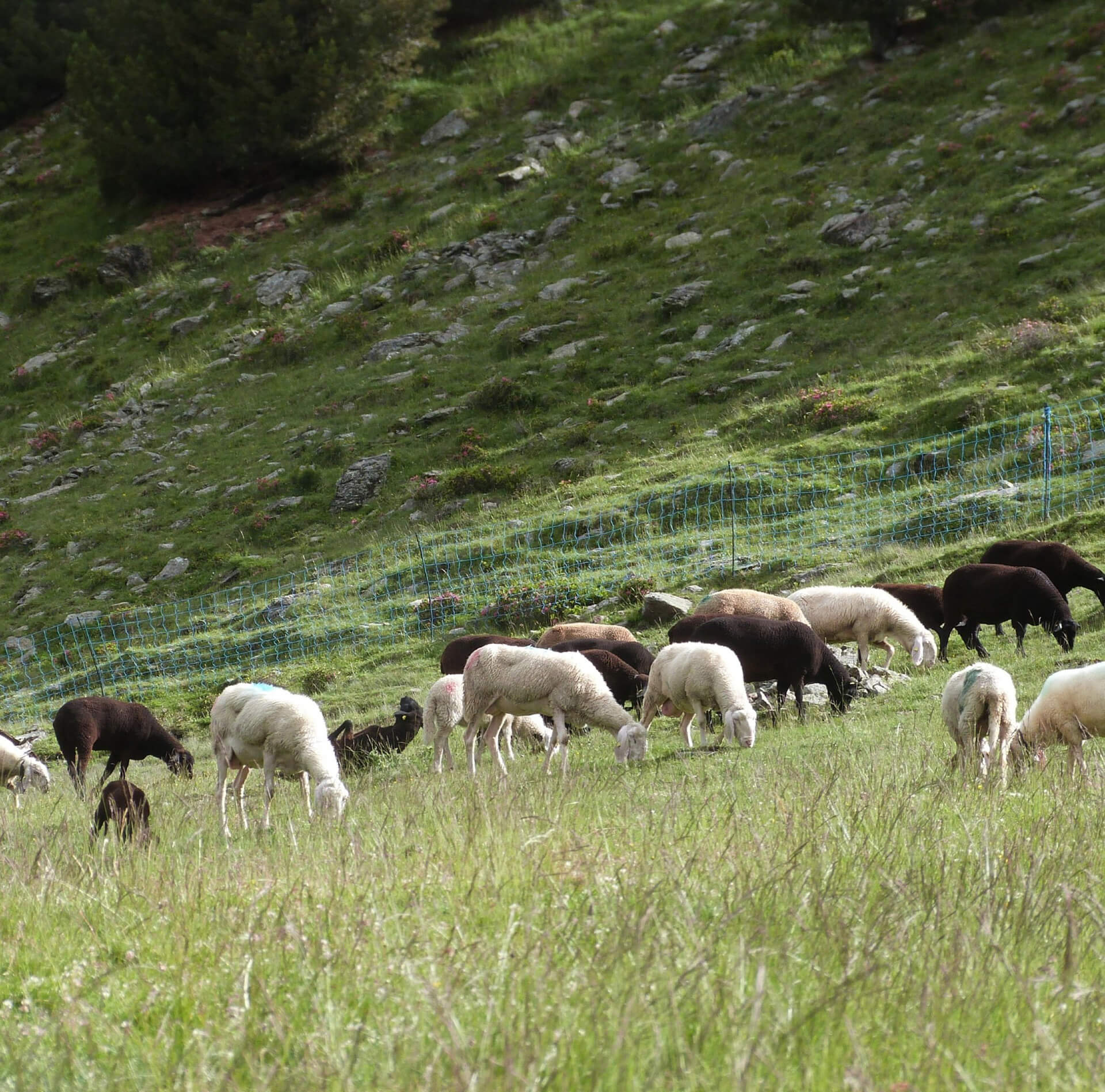
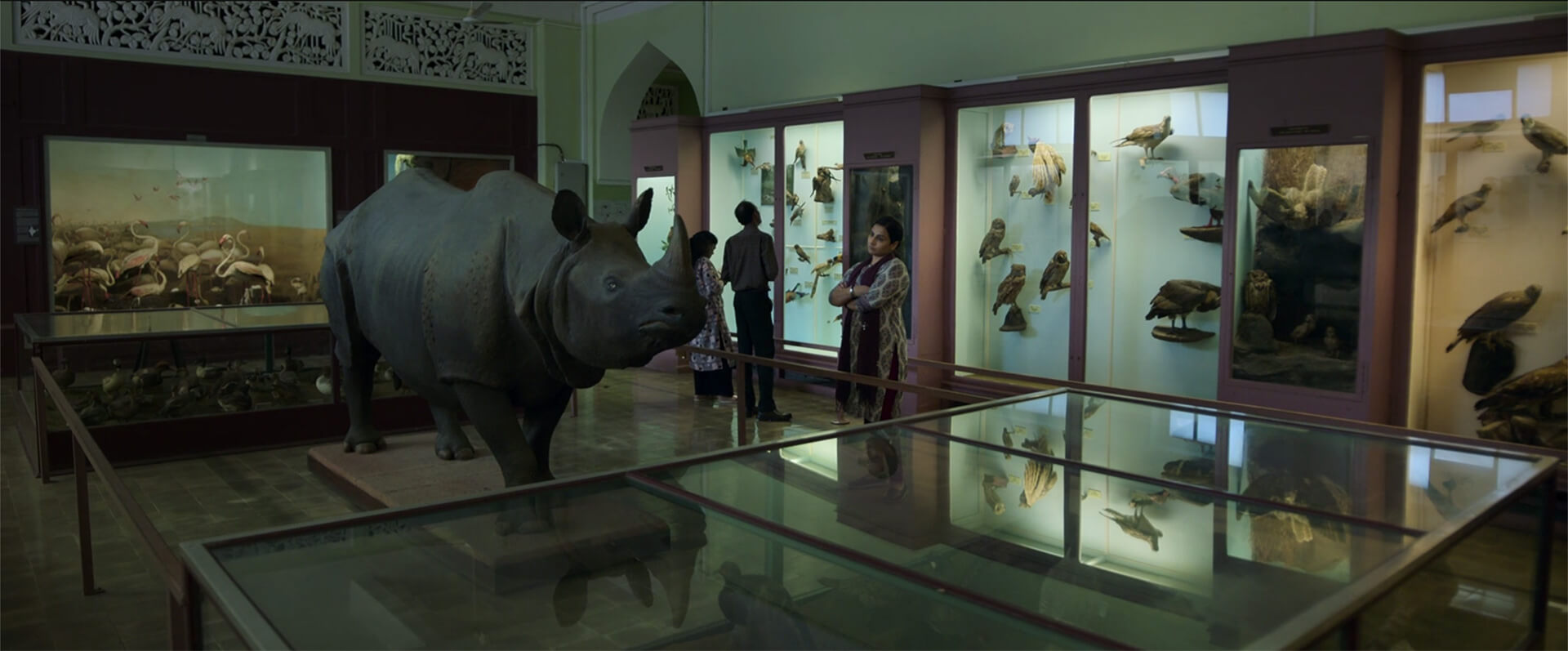
How this power manifests are powerfully communicated in the closing sequence of Sherni, when we are exposed to a re-stationed Vidya Vincent applying to her new posting the same rebellious energy that marked her last stint. She is now heading a nature museum and she surveys the various exhibits, inspecting them for damages. The camera pans at each display and we see how the museological discourse, another colonial inheritance, operated in order to ‘other’ the creatures on display, exhibiting them as taxidermic objects of study within artificial renditions of their natural habitat. It is a dark, disturbing sequence that powerfully evokes the dystopia we inhabit—a world in which man sees himself as separate from nature.
(Disclaimer: The views and opinions expressed here are those of the author(s) and do not necessarily reflect the official position of STIR or its Editors.)
by Shaunak Mahbubani Oct 13, 2025
Collective practices and live acts shine in across, with, nearby convened by Ravi Agarwal, Adania Shibli and Bergen School of Architecture.
by Srishti Ojha Oct 10, 2025
Directed by Shashanka ‘Bob’ Chaturvedi with creative direction by Swati Bhattacharya, the short film models intergenerational conversations on sexuality, contraception and consent.
by Asian Paints Oct 08, 2025
Forty Kolkata taxis became travelling archives as Asian Paints celebrates four decades of Sharad Shamman through colour, craft and cultural memory.
by Srishti Ojha Oct 08, 2025
The 11th edition of the international art fair celebrates the multiplicity and richness of the Asian art landscape.
 surprise me!
surprise me!
make your fridays matter
SUBSCRIBEEnter your details to sign in
Don’t have an account?
Sign upOr you can sign in with
a single account for all
STIR platforms
All your bookmarks will be available across all your devices.
Stay STIRred
Already have an account?
Sign inOr you can sign up with
Tap on things that interests you.
Select the Conversation Category you would like to watch
Please enter your details and click submit.
Enter the 6-digit code sent at
Verification link sent to check your inbox or spam folder to complete sign up process



by Rosalyn D`Mello | Published on : Apr 25, 2022
What do you think?